How often do you think about the Roman Empire? Memes aside, if you live in Rome like I do, the Roman Empire is always sort of looming in the background. I’m certainly no historian, but I’m fascinated by ancient history and am always drawn to Roman ruins, especially in unexpected places.
One such place is Córdoba, Spain, where I recently spent a long weekend with my sister. Located in Andalusia, about an hour from Spain’s southern coast, Córdoba is best known for its Moorish architecture, but long before the Arabs conquered the city (and much of Andalusia), the Romans built bridges, aqueducts, and other infrastructure. Córdoba likely originated as a Carthaginian city, but was conquered by the Romans in 152 BCE and became the capital of the wealthy province of Baetica under Augustus Caesar. During the pre-Christian period, pagans and Jews presumably lived peacefully in the city.
In the 6th century, after the fall of the Roman Empire, Córdoba came under Visigoth rule, but was captured by the Muslims in 711. Following a period of prosperity, it fell to the Castilian king Ferdinand III in 1236 and became part of Catholic Spain. Córdoba’s Jews were exiled or forced to convert during the Inquisition.
We arrived on a recent Friday and on our first evening there, decided to take a walk after dinner. Strolling around the historic center, we unintentionally found ourselves at the Roman bridge. Beautifully illuminated at night, it draws locals and visitors to enjoy the views. It’s believed to have been built during the era of Augustus in the 1st century and was the city’s only bridge crossing the Guadalquivir River until the mid-20th century. The bridge you see today is the result of a reconstruction during the Middle Ages.
On Sunday, we visited the Alcázar de los Reyes Cristianos, a fortress/palace built by Alfonso XI in 1328, and found more traces of the Roman Empire there. Upon entering the courtyard where the ticket office is located, we noticed what appeared to be Roman foundations—the first clue about the site’s past.
Inside, we entered the Hall of the Mosaics, where a series of mosaics discovered under Plaza de la Corredera are displayed on the walls. We admired a massive geometric mosaic with motifs similar to the ones in Rome’s Baths of Caracalla on one wall, then wandered over to the other side of the hall to see a second century mosaic with the head of Medusa in the middle.
Across from it is a mosaic depicting Polyphemus and Galatea, a beautiful Sicilian nereid (i.e. one of the daughters of the sea god Nereus and Doris, daughter of Oceanus). According to Greek mythology, Polyphemus was a cyclops who fell in love with Galatea and killed her lover Acis. (Those ancient civilizations had some rather interesting views about romance and courtship.)
Though Galatea and Acis weren’t so lucky, Odysseus managed to escape Polyphemus after washing up on the shores of Sicily and being captured along with 12 of his companions.
On Monday morning, before leaving, we finally made it over to the Mezquita, Córdoba’s massive mosque-turned-cathedral. Can you guess what we found? That’s right—more Roman ruins. The mosque was built on top of a Roman church from the 5th to 7th centuries. This part of the Roman Empire likely became Christian under the emperor Constantine, who ruled in the early 4th century and was the first Roman emperor to convert to Christianity and legalize the religion, which was previously outlawed.
The Mezquita as we see it today was built under Muslim ruler Abd ar Rahman I in the 8th century and was transformed into a Catholic cathedral in the 13th century. The interiors are an eclectic mix of Moorish, Gothic, and Baroque architecture best known for the red and white arches that sit atop a series of columns.
Near the entrance, you can see Roman mosaics under glass panels in the floor and farther into the church, there’s a section with fragments of columns, capitals, and other architectural elements displayed. Still, I think the most impressive parts of the Mezquita are those arches and the prayer niche with elaborate Moorish carvings and Byzantine-esque mosaics.
Further Reading
In case you missed the viral trend last year, check out this New York Times article which posed the question: Are men obsessed with the Roman Empire? (unlocked)
Want to plan your own trip to Córdoba? I used this 48-hour guide by Condé Nast Traveler to decide which monuments and restaurants to go to.
You can find all of the New Roman Times’ coverage of under-the-radar destinations here and all coverage of the Roman Empire here.


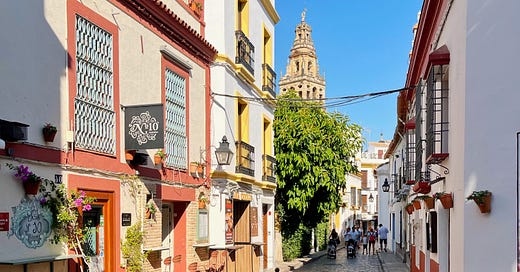



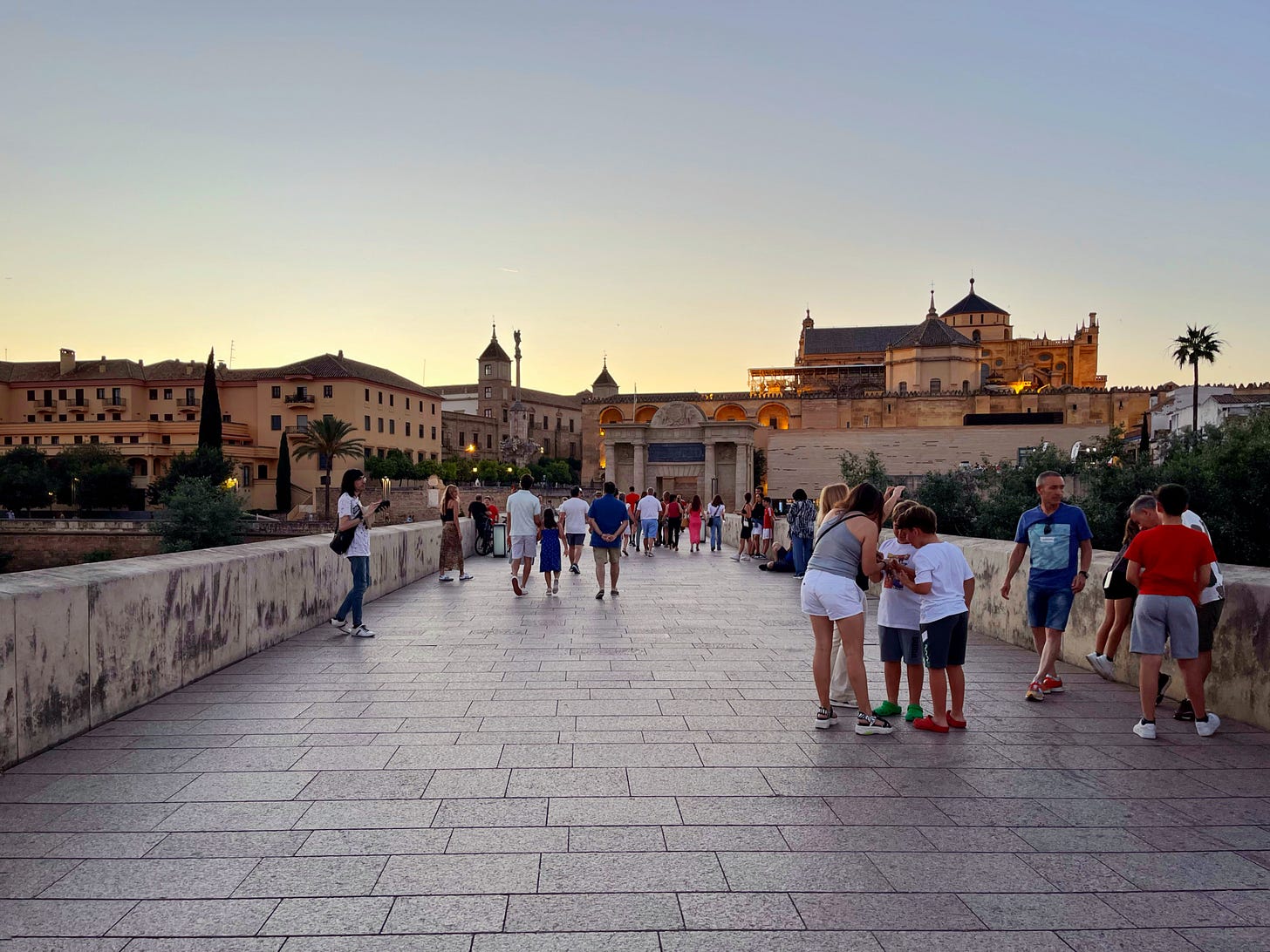
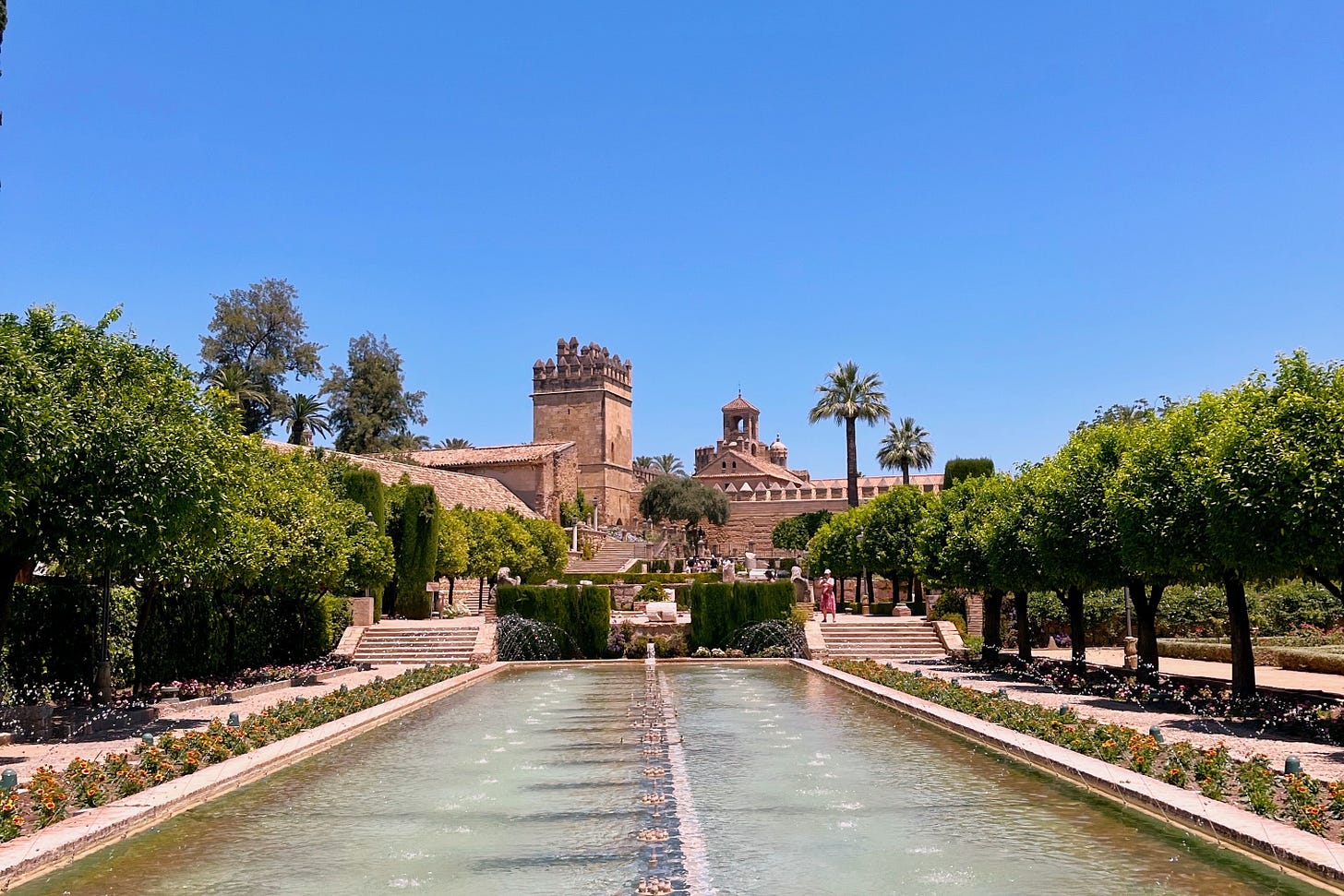
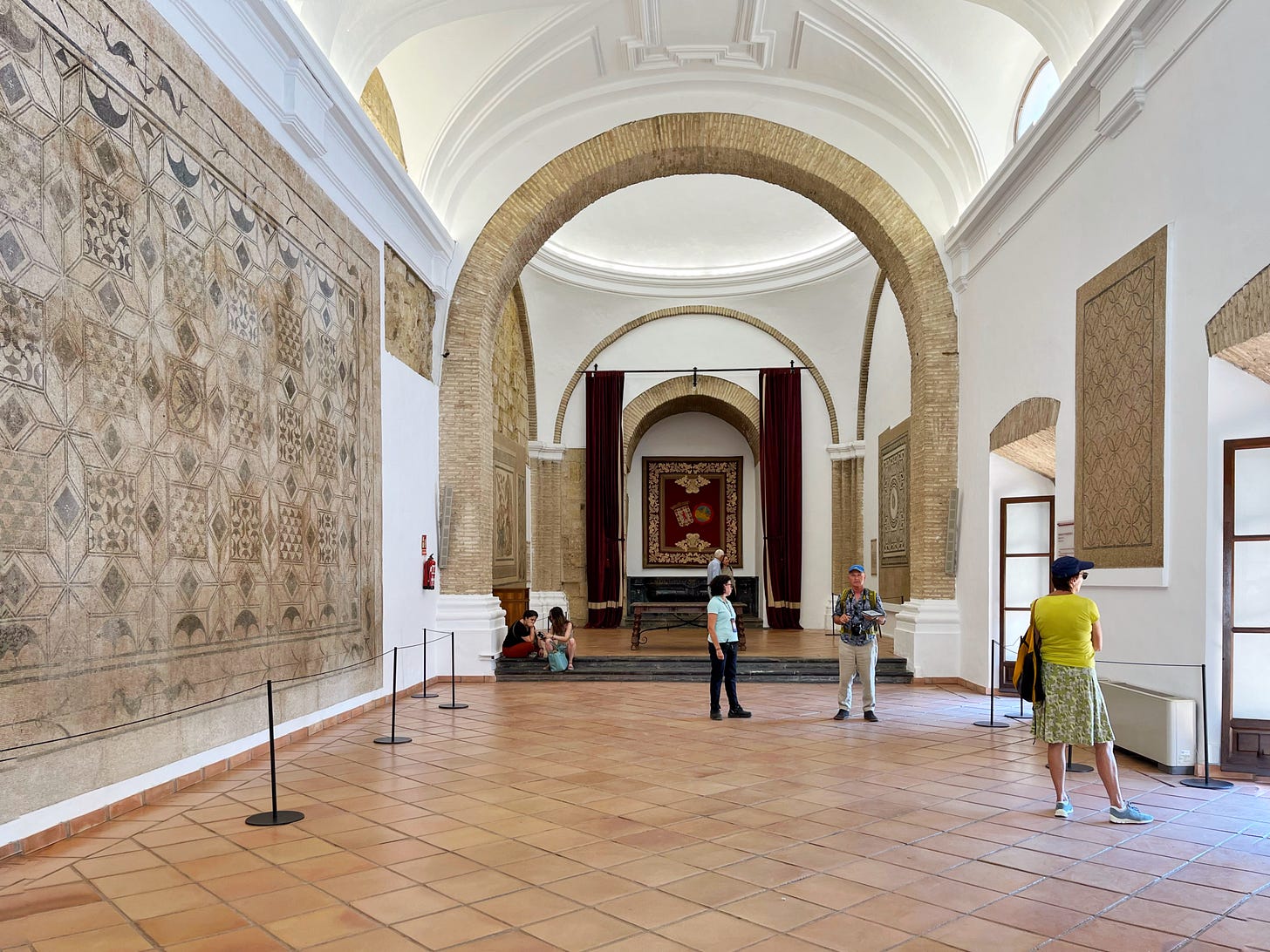
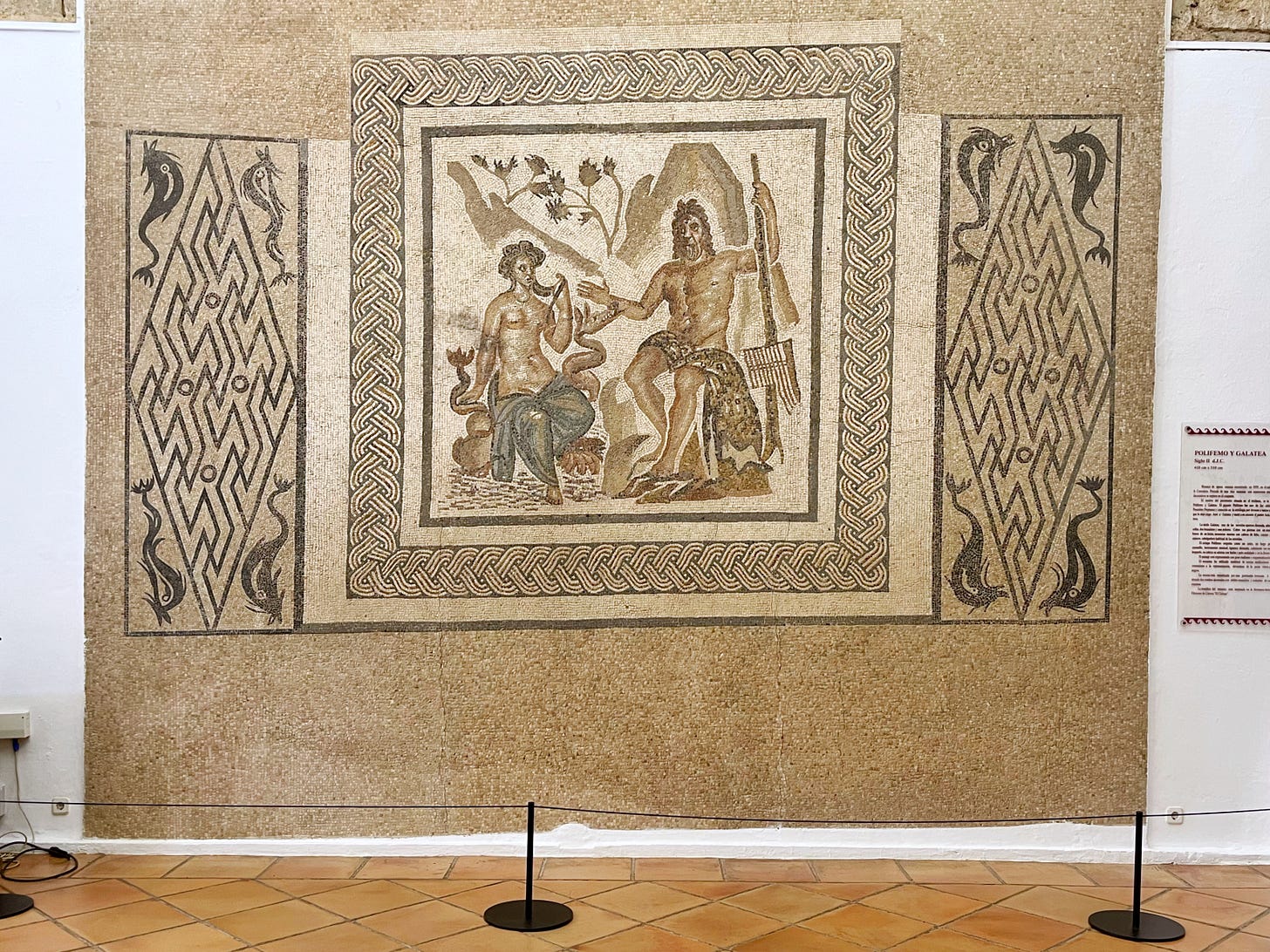
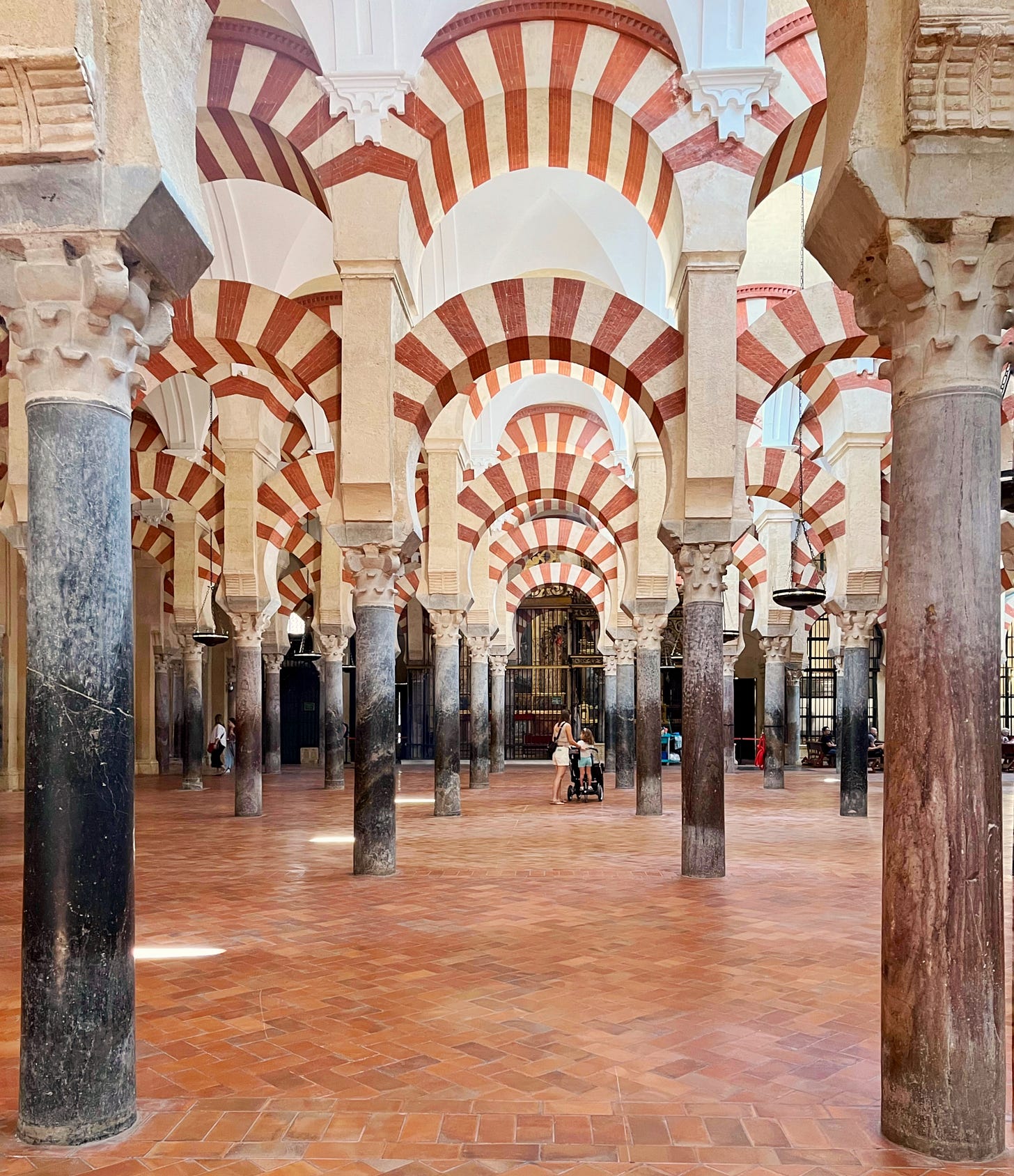
Wow-- remarkable architecture. It's funny how places with the most turbulent history wind up with the most fascinating architecture....
A part of Andalusia that's been on our radar for s while. Thsnks Laura